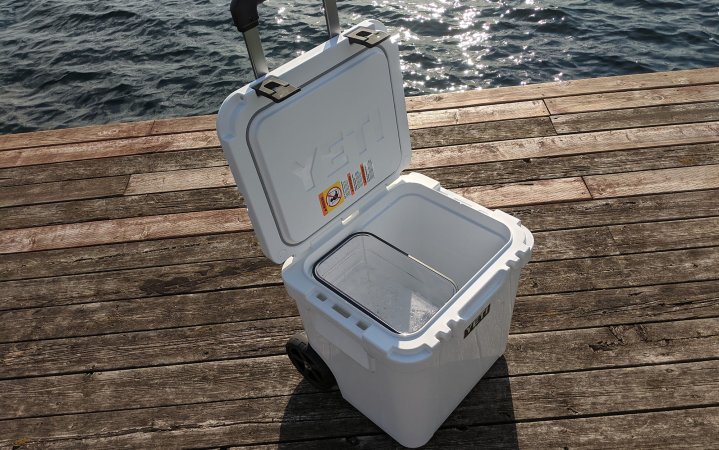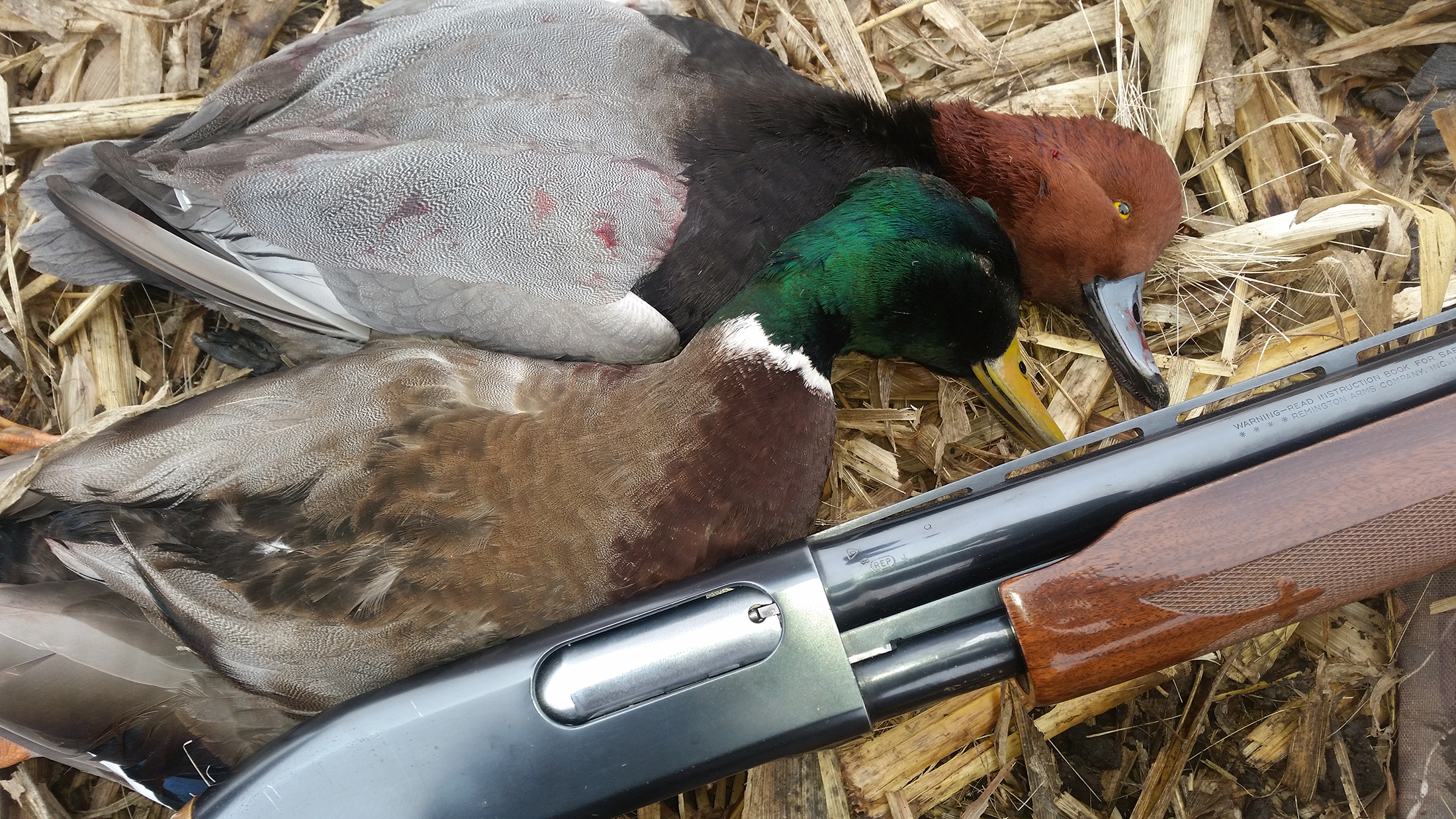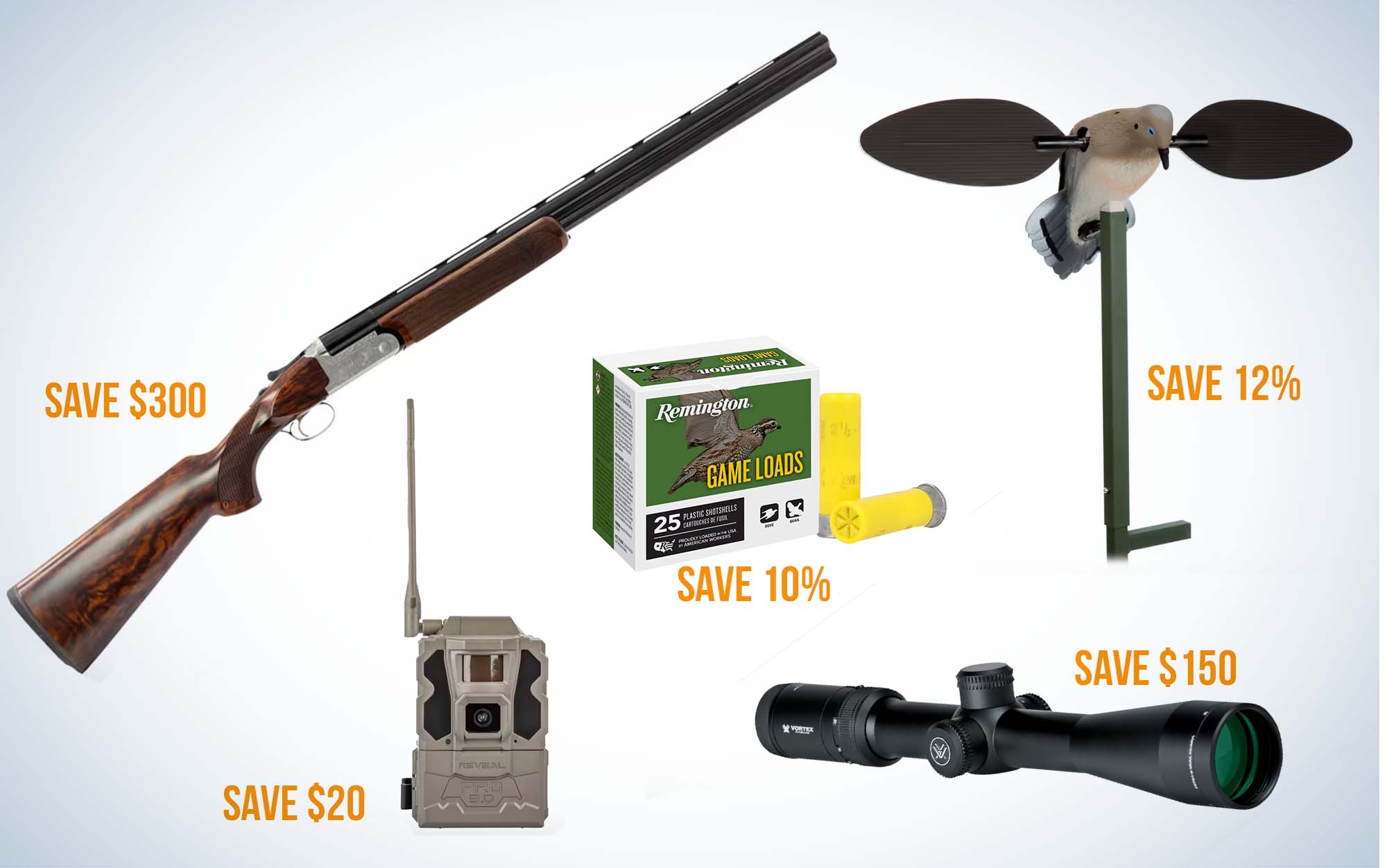Best Coolers of 2025, Tested and Reviewed

We may earn revenue from the products available on this page and participate in affiliate programs. Learn More ›
Over the years I’ve tested dozens and dozens of coolers: Big coolers. Small coolers. Backapck coolers. Electric coolers. One thing I’ve learned is that there is a shocking difference in quality between the best coolers and those that are just ho-hum. But also that price is not always a great indicator of quality, with relatively unknown brands often impressing me more than those that are household names. I tested the insulation, build quality, and capacity of coolers from the likes of Yeti, Igloo, RTIC, Coleman, and more to determine the best of the best.
↓ Jump to How I Tested the Best Coolers
↓ Jump to Test Results
The Best Coolers: My Top Picks
Best Overall: Titan Pro 55Q High Performance
Photo by Laura Lancaster
Buy from Amazon
Buy from Walmart
Pros
- Waterproof
- Excellent insulation
- Great ratio of capacity to packed size
- Easy to use latches
- Lights up when you open it
Key Features
-
Price:
$400 -
Exterior Size:
17” x 29” x 18” -
Can Capacity:
80 (tested) -
Comes with an internal basket, ice saver lid, bottle opener, and internal light -
Not IGBC certified
Test Results
-
Ice Retention Test:
118 hours -
Port Quality:
Great -
Latch Quality:
Great -
Portability:
Good -
Waterproof:
Yes
This was the cooler that ticked every box for performance. It had a ton of interior space relative to its actual size, and it held a third of its capacity in ice for almost five days. Its handles were comfortable to hold onto which made it easier to move in and out of my car. The latches were even easier to use, minimizing concern that someone will forget to close up the cooler properly. And it also featured a ton of less essential features like a bottle opener, bungee tie-downs on the top, and — my favorite — a light that turns on when you open the cooler. Nice for retrieving a beer in those twilight hours before you’ve broken out the headlamp. It was even waterproof.
The only real downside to this cooler is that it’s pricey. But if you want the best of the best, I think you’ll be happy with this pick. The lack of wheels may also make it difficult to lug around this cooler if you have a shorter wingspan.
Best Value: Igloo Trailmate 50
Photo by Laura Lancaster 
Buy from Cabela’s
Buy from Walmart
Buy from Amazon
Pros
- Great ice retention
- Affordable
- Great capacity to packed size
Cons
- Latches are difficult to use
Key Features
-
Price:
$100 -
Exterior Size:
18” x 25” x 17” -
Can Capacity:
81 (claimed); 82 (tested) -
Comes with a built-in bottle opener -
Not IGBC certified
Test Results
-
Ice Retention Test:
122 hours -
Port Quality:
Great -
Latch Quality:
Poor -
Portability:
Great -
Waterproof:
No
I was blown away by the Igloo Trailmate 50. Despite being a quarter of the price of flashier brands, this cooler held its own in testing, outlasting every single other cooler in my ice melt test — the only one to pass the five-day mark before the ice was fully melted. This is especially impressive given that it has a ton of capacity relative to its packed size. Because it had so much interior space, it got loaded with a pound or so more ice than other coolers of its same exterior volume. My main takeaway from this is that, at a certain point, more ice is a better use of space for a cooler than more insulation. And when the price point is this low, you can probably afford to get a few more of the best ice packs for coolers to line the bottom of it before dumping in your own ice.
But, there is one problem with this cooler. Its latches are a pain in the butt to use, requiring some hand strength to get it pulled back down. No child is going to be able to use this one on their own, unfortunately, and I had to put some real effort into it myself when the cooling interior of the cooler created a suction effect.
Most Portable: Yeti Roadie 48
Photo by Laura Lancaster 
Buy from Yeti
Buy from Amazon
Buy from REI
Pros
- Good ice retention
- Easy to use latches
- Very portable
- Fits in my car
Cons
- Expensive
- Port is not attached to the cooler
- Not waterproof
Key Features
-
Price:
$425 -
Exterior Size:
19.5” x 21” x 20.5” -
Can Capacity:
76 (claimed); 68 (tested) -
Comes with an internal basket -
IGBC certified
Test Results
-
Ice Retention Test:
115 hours -
Port Quality:
Good -
Latch Quality:
Great -
Portability:
Great -
Waterproof:
No
This test started with me pulling my Yeti Roadie out of my storage closet, and it’ll end with me putting it back. The Yeti Roadie might not have been the best cooler in my test, but for a smaller individual like me, its portability trumps all. This is the cooler that I can get into the backseat of both my sedan and my 4runner. I can pick it up fully loaded without discomfort. Its wheels and telescoping handles have never let me down. And it held its own in the insulation test, lasting nearly five days. Sitting in the baking sun (I’m too lazy to move it to the shade), three bags of ice were plenty for the entirety of Memorial Day weekend.
Of course, like all things Yeti, this one is very expensive. I also don’t love that the outlet port isn’t attached to the cooler, which means you risk losing it if you aren’t careful.
Best Warranty: Pelican 45QW Elite Wheeled
Photo by Laura Lancaster 
Buy from Pelican
Buy from Amazon
Buy from Walmart
Pros
- Great lifetime warranty
- Good insulation
- Easy to use latches
Cons
- Not my favorite wheeled cooler
- Expensive
Key Features
-
Price:
$466 -
Exterior Size:
18.5” x 28” x 18.5” -
Can Capacity:
68 (tested) -
Comes with a built-in bottle opener -
IGBC certified
Test Results
-
Ice Retention Test:
115 hours -
Port Quality:
Great -
Latch Quality:
Great -
Portability:
Good -
Waterproof:
No
If you’re after thoughtful design, go with Yeti. But if absolute durability is your aim, go with Pelican. Yeti offers a five-year warranty on their coolers; Pelican offers a lifetime warranty, with a good reputation for standing by it. And they were about equal in my insulation test, although the Yeti does offer a better packed size to capacity ratio.
While the latches were easy enough to use that you shouldn’t have problems with this cooler being left open, it’s not my favorite for wheeling around. The side handle, as opposed to telescoping handle, just doesn’t offer enough leverage; the cooler has a tendency to hit your legs as you walk. This is also a pretty pricey cooler, the most expensive that I tested.
Yeti Tundra 65
Photo by Laura Lancaster 
Buy from Yeti
Buy from REI
Buy from Amazon
Pros
- Great insulation
- Good capacity to packed size
Cons
- Latches needed a little extra torque to use
- Port not attached
Key Features
-
Price:
$375 -
Exterior Size:
17” x 30” x 16” -
Can Capacity:
77 (claimed); 72 (tested) -
Comes with an internal basket -
IGBC certified
Test Results
-
Ice Retention Test:
117 hours -
Port Quality:
Good -
Latch Quality:
Good -
Portability:
Great -
Waterproof:
No
Even if it’s not the absolute best, there is no doubt that the Yeti Tundra 65 is a great cooler. It had excellent insulation, landing in the top three in my ice melt test. It was surprisingly easy to pick up and maneuver around for a cooler of its size and shape. There was a good amount of interior space relative to the actual space it will take up in your rig.
I wish the port was attached and that the latches were slightly easier to use. But these are minor quibbles. If you’ve been eyeing this cooler, it’s a great buy.
RTIC 45QT Ultra-Tough Wheeled
Photo by Laura Lancaster 
Buy from RTIC
Buy from Amazon
Buy from Walmart
Pros
- Less expensive than the equivalent Yeti
Cons
- Not quite as good as the equivalent Yeti
Key Features
-
Price:
$270 -
Exterior Size:
18” x 23” x 20.5” -
Can Capacity:
60 (claimed); 69 (tested) -
Comes with a pocket under the lid and removable bottle opener -
Not IGBC certified
Test Results
-
Ice Retention Test:
109 hours -
Port Quality:
Great -
Latch Quality:
Great -
Portability:
Good -
Waterproof:
No
If you’re thinking about buying an RTIC cooler, chances are you’ve wondered if it’s a good deal compared to the equivalent Yeti cooler. After having a chance to test two of them side-by-side, the answer is a resounding yes. For a hundred dollars less, you get a cooler that can perform to a high level across a variety of metrics.
Which isn’t to say it’s as good of a cooler. It’s not. The equivalent Yeti can hold ice for longer. The handles of the Yeti are also more comfortable for lifting it up, although the RTIC has an attached port, which is a plus.
Don’t overthink this one, you know which of these two coolers is right for you.
The Best Coolers: The Rest of the Field
Brutank Brumate 55 QT
Photo by Laura Lancaster 
Buy from Brutank
Buy from Brutank
Pros
- Great insulation
- Waterproof
Cons
- Bulky
- Difficult to use latches
- Expensive
- Poor capacity to exterior size
Key Features
-
Price:
$400 -
Exterior Size:
19” x 30.5 x 19” -
Can Capacity:
59 (claimed); 78 (tested) -
Comes with an internal basket and drink tank with a built-in tap -
Not IGBC certified
Test Results
-
Ice Retention Test:
119 hours -
Port Quality:
Great -
Latch Quality:
Poor -
Portability:
Good -
Waterproof:
Yes
There are some great qualities to the Brutank Brumate. It has excellent insulation. It was one of the few coolers I tested that was completely waterproof. And it has a feature unique among the coolers that I tested: a built-in drink tank complete with a spigot on the outside of the cooler. If you are in the habit of concocting special drinks to share with friends and families on hot days, this is a really nice add-on.
Unfortunately, it all came at a price for the Brutank Brumate. Some of that was the literal cost. This cooler was one of the pricier that I looked at. It’s also very bulky: because it has a lot more insulation than other coolers I looked at, it takes up a lot more space. I also struggled mightily with the latches. Not only are children not going to be able to use these on their own, a lot of adults probably won’t bother. Finally, it has a black finish on the top, which is unfortunate as it will absorb more heat on sunny days and reduce the effectiveness of its insulation.
Coleman Pro 45-Quart Hard
Photo by Laura Lancast 
Buy from REI
Buy from Amazon
Pros
- Less expensive
- Almost waterproof
Cons
- Insulation isn’t up to the level of the other colors in this test
Key Features
-
Price:
$200 -
Exterior Size:
16” x 24.5” x 17” -
Can Capacity:
74 (claimed); 72 (tested) -
Not IGBC certified
Test Results
-
Ice Retention Test:
103 hours -
Port Quality:
Great -
Latch Quality:
Good -
Portability:
Good -
Waterproof:
Almost
In the end, the Coleman performed fine for its price point, but compared to the Igloo Trailmate Journey it was more expensive and not as good as an insulator. But, if you find it on steep discount it’s worth a look. It was nearly waterproof, just leaking a bit out the back when I turned it over.
There were no issues with the comfort or ease of the ports or the handle, although the closure mechanism may take some getting used to. Just keep your expectations of how much insulation you’re going to get out of this one in check, as the ice in this one didn’t last nearly as long as with some other coolers I tested.
Igloo Trailmate Journey
Photo by Laura Lancaster 
Buy from Walmart
Buy from Amazon
Pros
- Crazy huge wheels and clearance
- Long telescoping handle
- Easy-to-use lid
- Somewhat less expensive
Cons
- Not a great insulator
- Not a lot of interior space for its packed size
Key Features
-
Price:
$260 -
Exterior Size:
18” x 25” x 17” -
Can Capacity:
112 (claimed); 84 (tested) -
Comes with an internal basket, built-in bottle opener, butler tray, and exterior pocket -
Not IGBC certified
Test Results
-
Ice Retention Test:
94 hours -
Port Quality:
Great -
Latch Quality:
None -
Portability:
Great -
Waterproof:
No
If you’re taking your cooler along for a Tough Mudder you’d be hard pressed to do better than the Igloo Trailmate Journey. While it didn’t have the best wheels that I’ve ever tested (that goes to the RovR RollR), what it lacks in build quality it makes up for in sheer over-the-topness. The Trailmate Journey has 10-inch wheels, and 6 inches of dead space beneath the bottom of the cooler. There is no rock this thing won’t go over, and it had zero issues with my test course in my look at the best coolers with wheels. And thanks to the long telescoping handle, it was comfortable and easy to maneuver around.
But if you’re going to use your cooler for something more casual, this is probably the wrong pick. Its biggest issue is that it just doesn’t have great insulation, lasting only 94 hours in my test (the longest result was 122 hours). Its ratio of usable capacity to packed size was also the worst in my test — a major issue when you’re using every square inch of space in your adventure vehicle when gearing up for the weekend.
Dometic Patrol 35
Photo by Laura Lancaster 
Buy from Amazon
Buy from Dometic
Pros
- Clean aesthetic
- Comfortable haul handles
- Easy-to-use latches
Cons
- Water leaks from drainage port
Key Features
-
Price:
$230 -
Exterior Size:
16.5” x 27″ x 14.75” -
Can Capacity:
28 (claimed); 56 (tested) -
Not IGBC certified
Test Results
-
Ice Retention Test:
110 hours -
Port Quality:
Poor -
Latch Quality:
Great -
Portability:
Great -
Waterproof:
No
Dometic makes some of my favorite camping gear — including a surprisingly elevated camping water container — with a great focus on practical design. Their products just make camping easier and more enjoyable. So I was stoked to check out their Patrol 35 cooler, a nice mid-sized option that ticked many of the boxes of what I’m looking for in a cooler. The latches were easy to use, the haul handles made moving the cooler — even when filled with ice — comfortable enough. I especially appreciated the versatility of the size of this cooler. It’s large enough to get you through a long weekend of car camping if you are smart about how you pack, but isn’t completely overkill to bring out for a beach afternoon. And in the ice melt test, it managed a little over four and a half days.
Unfortunately, the quality of the port design ended up spelling doom for the Dometic Patrol 35. Prior to the melt test I noted a few issues with it. The first was that it wasn’t attached to the cooler, making it that much easier to lose. But the bigger issue was the quality of the threads used to screw it in. It took me a few tries to get it right, and I cranked down the port to make sure it was secure. Then, during the ice melt test, I noted that water was leaking out of the port, anyway. At this price point, you should expect a cooler that doesn’t leave a puddle in the back of your adventure van. I recommend going with a different pick on this list.
How I Tested the Best Coolers
I’ve tested dozens of coolers over the years, looking at everything from ice retention to wheel performance to latch quality. My tests for this story focused on capacity, insulation, packed size, portability, latch and port quality, and waterproofness. I also considered price. Step one was to determine the capacity of each cooler in cans, and measure its exterior size, calculating the liters based off of this
Next up was my insulation tested, which timed how long it took for ice to melt in the cooler. Frequently claims by manufacturers (and some gear testers) use a cooler filled to the brim with ice. That’s pretty ridiculous, and it’s certainly not how anyone actually uses coolers. That’ll give you an OK picture of relative performance but it won’t give you an idea of how long you can expect your cooler’s ice to actually last in the field. For this test, I filled each cooler with one third its capacity in ice (cans/3 x .71 pounds), and left it to sit at temps that range from 60 degrees overnight to 70 degrees during the day. Then I sat back and waited to see how long it took the ice to melt.
During the insulation test, when the coolers were filled with ice, I also tested their portability, including handle comfort and how easy it was to walk with the cooler. Where the coolers had wheels, I relied on the test from my story on the best coolers with wheels to provide relevant data for ease of use. Once the ice had fully melted in all the coolers, I looked at how waterproof each cooler was.
Finally, I looked at port and latch quality. While these details are often overlooked, they impact your cooler experience in several ways. The port is especially important as one that is difficult to use or, worse, not attached, can make draining your cooler and then sealing it up again a major hassle. Latches in my experience are also important. You’ll most likely have different people going in and out of your cooler whenever it’s being used, and a difficult-to-use latch is just not going to be used at all. That will impact how well your cooler retains its ice in the long haul.
Test Results
Things to Consider When Purchasing the Best Cooler
Ice Retention of the Best Coolers
I’ve seen a wide range of ice retention capability in my years of testing coolers, and one thing has become clear: You get what you pay for. In almost all scenarios, the coolers that have the best ice retention have been the most expensive. However, how much ice retention you need personally will vary. If you’re only planning to head out for the day or overnight, you can get away with a less capable cooler than if you need three bags of ice to last for a week or more. Consider your needs before making a final purchase.
Size of the Best Coolers
There are two dimensions you should be concerned with when it comes to coolers: external size and internal size. The external size will need to fit your available storage, both in your home and in your car. The internal size will need to hold sufficient food, beverages, and ice to meet your needs. Consider both dimensions before making a final purchase.
Read Next: The Best Small Coolers
Portability of the Best Coolers
In testing coolers, which typically involves hauling them up and down several flights of stairs and into my car before I even get to a testing site, the details that make for a portable cooler really start to pop. For large, non-wheeled coolers, comfortable haul handles are everything. For wheeled ones, a short handle can make for a miserable experience. Some small coolers sit comfortable against your body when you’re carrying them. Others are awkward and dig into your legs. And, as someone who has tested a number of the best backpacks, I’m still waiting for a backpack cooler that I’d actually want to take on a longer hike.
Read Next: The Best Backpack Coolers
Latching Mechanism of the Best Coolers
You can maximize the ice retention of your cooler by keeping it closed. That sounds like an obvious point, but how easy the latches are to use can really impact how this plays out in practice, especially when children are involved. If you expect a variety of people to go in and out of your cooler all day, look for latches that are simple and secure, and don’t require a lot of torque.
Final Thoughts on the Best Coolers
One of the best cooler can really elevate your outdoor experience. The options here are my favorite picks after years of testing dozens of models.
Read the full article here









